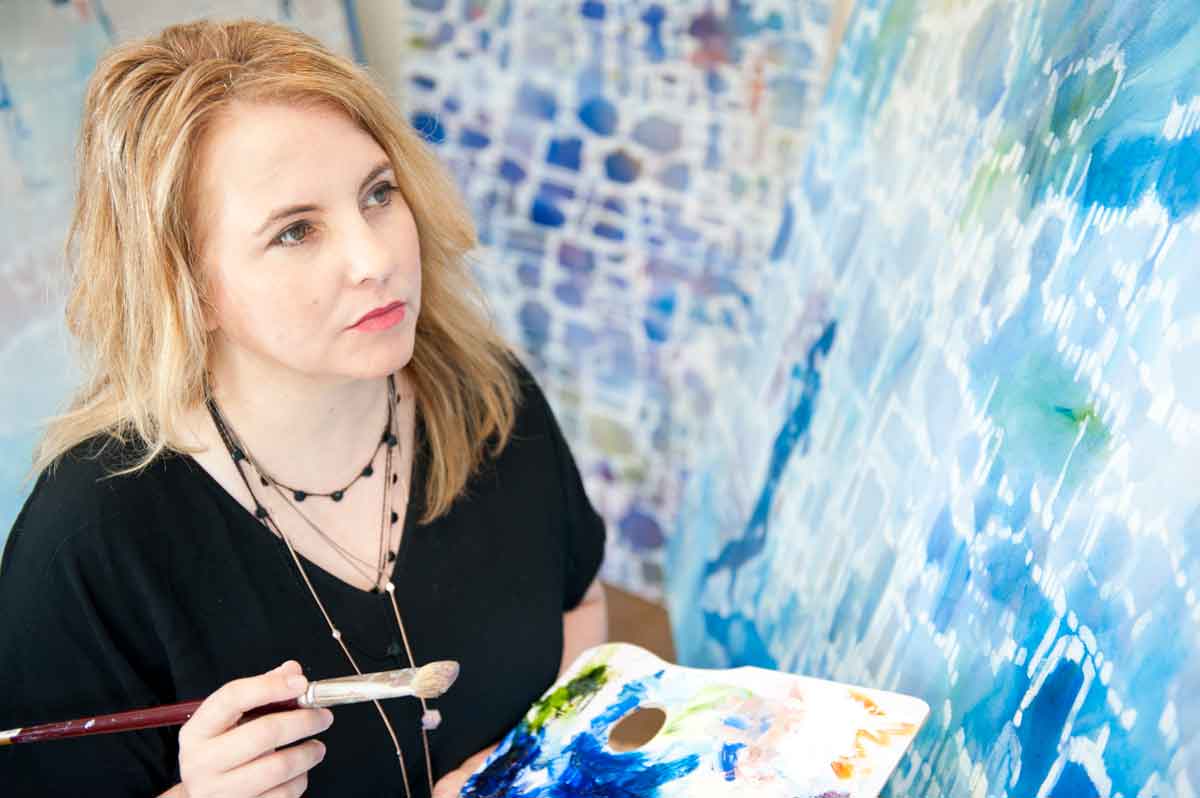Belinda Wilson Painter
Can you expand on your master’s Research, and relate the importance of art on current day issues – Climate change?
The Master of Fine Art by research (MFA) degree was undertaken through RMIT University in Melbourne. The degree took 4 years to complete (part time) as I was employed as the Deputy Head of School, (Vocational Education) in the School of Art, RMIT University. I have been working at RMIT since 2010 when I relocated from regional Victoria to take up this position. My current position at RMIT is a Senior Advisor, Learning and Teaching, Vocational Education.
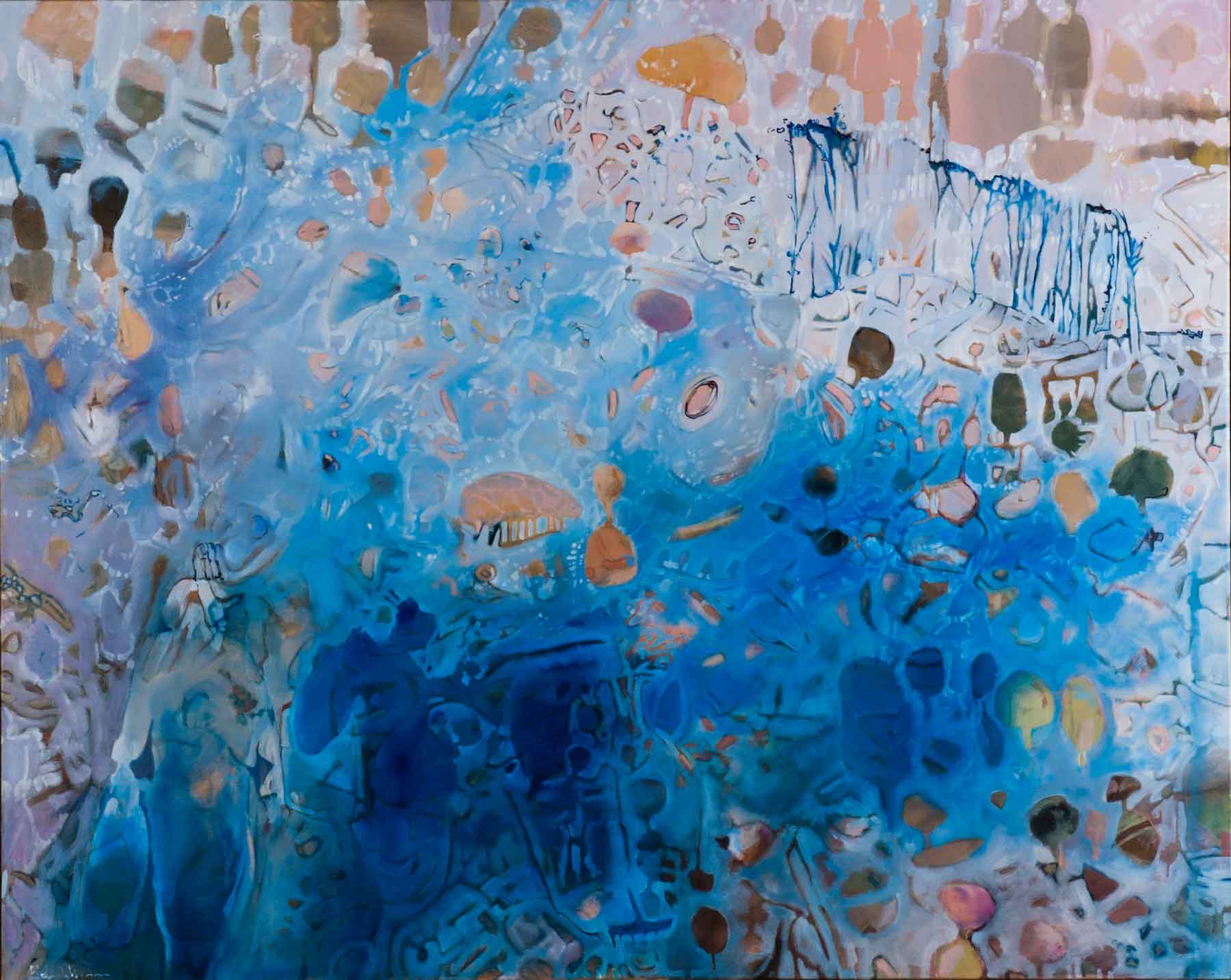 Searching for Ghost Gums, Oil on linen, 125 x 155cm
Searching for Ghost Gums, Oil on linen, 125 x 155cm
The practice led research undertaken through the MFA, emerged from a studio-based approach to landscape painting and drawing. I combined my own memories with selected personal experiences and historical accounts of others, to create a body of artwork that investigated extreme weather conditions. Primarily, I concentrated on the locations of Longwood, Wangaratta and Milawa in North East Victoria, Australia to narrate experiences of living through drought, flood and bushfire and how this affected inhabitant’s emotional wellbeing.
In recent times, the issues surrounding extreme weather conditions in Australia has come into stronger focus, as many regional communities are being devastated by the impacts of challenging weather conditions. How the extreme weather affected inhabitants in regards to their lifestyle and emotional wellbeing has been a critical aspect of my research project. The direct relationship between personal wellbeing and extreme weather are important factors when making the body of work for the MFA, as it is now evidenced that extreme weather does impact and influence how we feel. There can be obvious physical impacts on one’s environment such as losing a house in a bushfire or livestock destroyed as a result of drought. Ultimately the weather negatively affects and impacts on our wellbeing which was evidenced in my research.
Art has the potential to bring attention to many current issues that can sometimes be overlooked or misunderstood. For communities in regional or remote areas, art plays an important role in recognising these challenges and understanding what is happening in these communities.
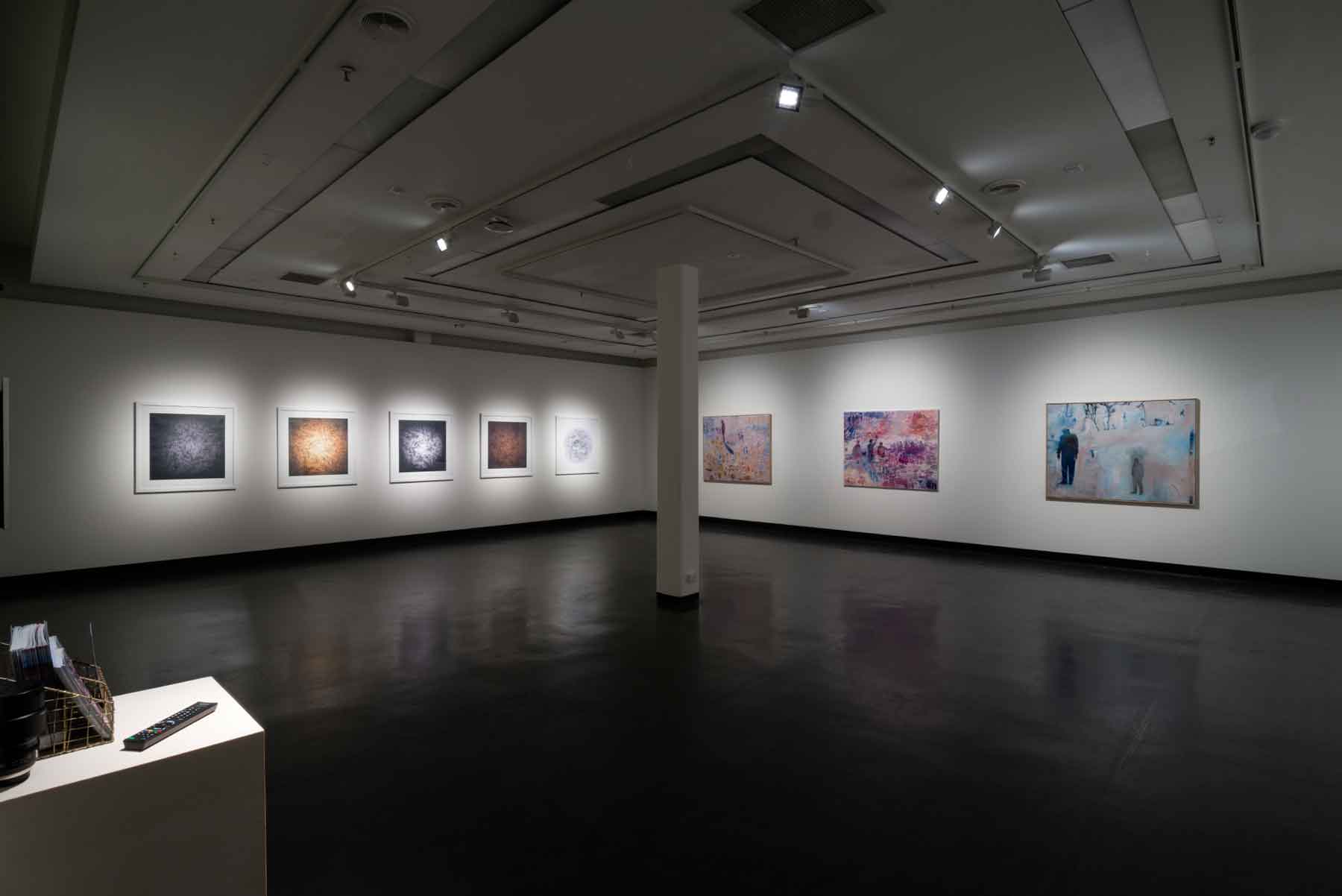
MFA Exhibition, July 2018
Highlight three devastating conditions that continue to face Australians and your art. Comment on these 3 aspects as an Australian Artist.
Drought
Flood
Fire
Like many teenagers growing up in a regional town, the desire to leave is compelling and I left when I was 18 years old and moved to Melbourne to study fine art at University. I returned to Wangaratta in my thirties for family reasons and encountered a nine-year drought (2000 -2009) This was known as the Big Dry or Millennium Drought that was followed by extreme bushfires that created chaos and loss. The worst of these fires became known as The Black Saturday bushfires in February 2009. The Black Saturday bushfires caused 180 fatalities and burnt across Victoria throughout the month of February. These events made a significant impact on me personally, which influenced my art practice. In my landscape paintings, the environment was portrayed to not only have a sense of place but a reaction to the extreme weather conditions that surrounded me.
Your work has been in one Australian Embassy, South Korea, Costa Rica and New York City. Can you explain how each came about and briefly discuss a painting that went to each embassy and why?
I lived and worked in South Korea for 2 years (1996-1998) as both an artist and educator. It was an amazing time living abroad and discovering a new and exciting country that was rich in history and culture. Living overseas as a young woman in her 20’s was exciting but sometimes overwhelming and daunting. I knew no one when I arrived but the hospitality and friendliness of the Korean people and expatriates that I encountered was amazing. I lived in the city of Bucheon, a satellite city of Seoul, about 25 kilometres away.
During my time in South Korea, I was involved in an artist group called A-link (Artists living in Korea) which was founded by Mary E Roettger and Andrew Owen. “A-Link’s mission was to generate a new visual resource and exchange between Korean art students and Foreign/Overseas Korean artists” (Mary E Roettger 2000). One of the highlights from A-Link was an exhibition in 2000 at The Ilmin Museum of Art. The exhibition was organised by A-Link coordinator Raymond Hahn and curated by Mr Chang Dong-Kwang. The exhibition featured 17 Korean and international artists which showcased an exploration of artistic mediums from each artist whilst they lived in Korea.
Many of the expatriates in South Korea would meet at the Australian Embassy for Friday night drinks. I met the Manager of the Australia Centre; Clinton Jackal and we discussed an art exhibition to be the official opening of the Centre. The exhibition titled Quasi ideals: Images of Satiric Symbolism was opened in July 1998 by the Australian Ambassador Tony Hely. The artworks that were exhibited were created in gouache on water coloured paper and featured images that responded to my environment in Korea, the people I encountered as well as the culture and customs that I experienced.
After I left South Korea, I travelled to Europe and Central America where I lived in Costa Rica for a period of 6 months. I continued with my practice in landscape paintings which was exhibited in Costa Rica.
Several years later I would exhibit at the Sofitel hotel in Melbourne in 2003 with a solo exhibition that showcased the painted landscape from North East Victoria where I was living at the time. The exhibition also partnered with wine and food producers of the North East region and the local produce was featured at the Sofitel restaurant for the month the exhibition was on.
You work in many sizes how and why do you decide on the original canvas size?
There is a lot of planning when creating a body of work to exhibit. Many considerations come into play. The theme of the work, the style I want to relay, the exhibition space, art mediums and who the audience will be.
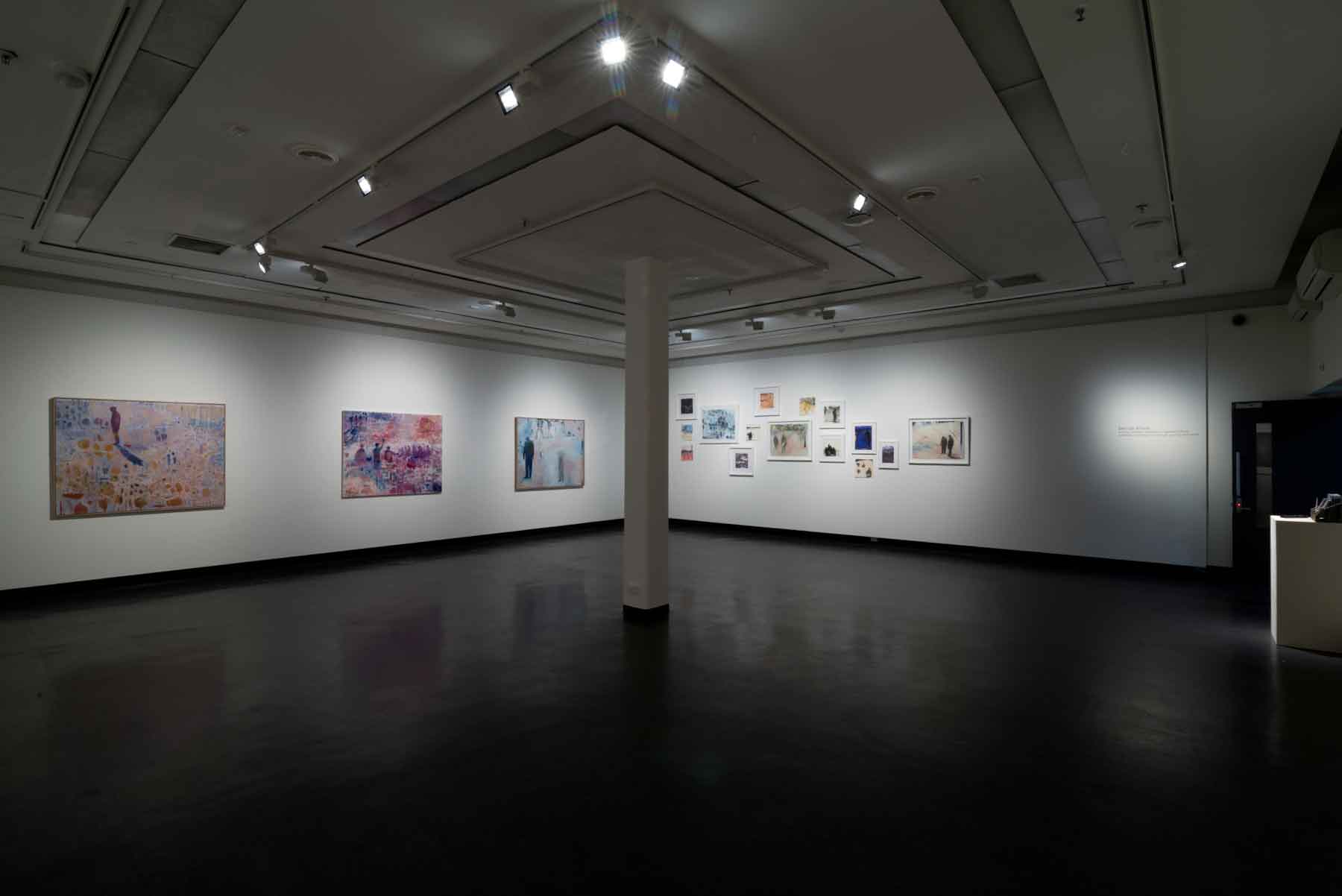
MFA Exhibition, July 2018
Currently, my preferred canvas size is 125 x 155cm. The larger canvas provides a freedom to explore. I don’t have to squeeze images and figures into a small area. The larger canvas allows for expressive brush work, detail and space surrounding the figures. The space between each figure on the canvas reminds me of distance when living in a regional community.
How do you decide on the amount of time you will spend on Exhibition/s work each year?
I am constantly creating new works, many are to be exhibited and some will never be seen outside my studio. These works are about exploration, idea building and seeing how they will ultimately develop. I work on multiple pieces at once, due to my time constraints with working at a University and having a family. Some artworks take many months to complete.
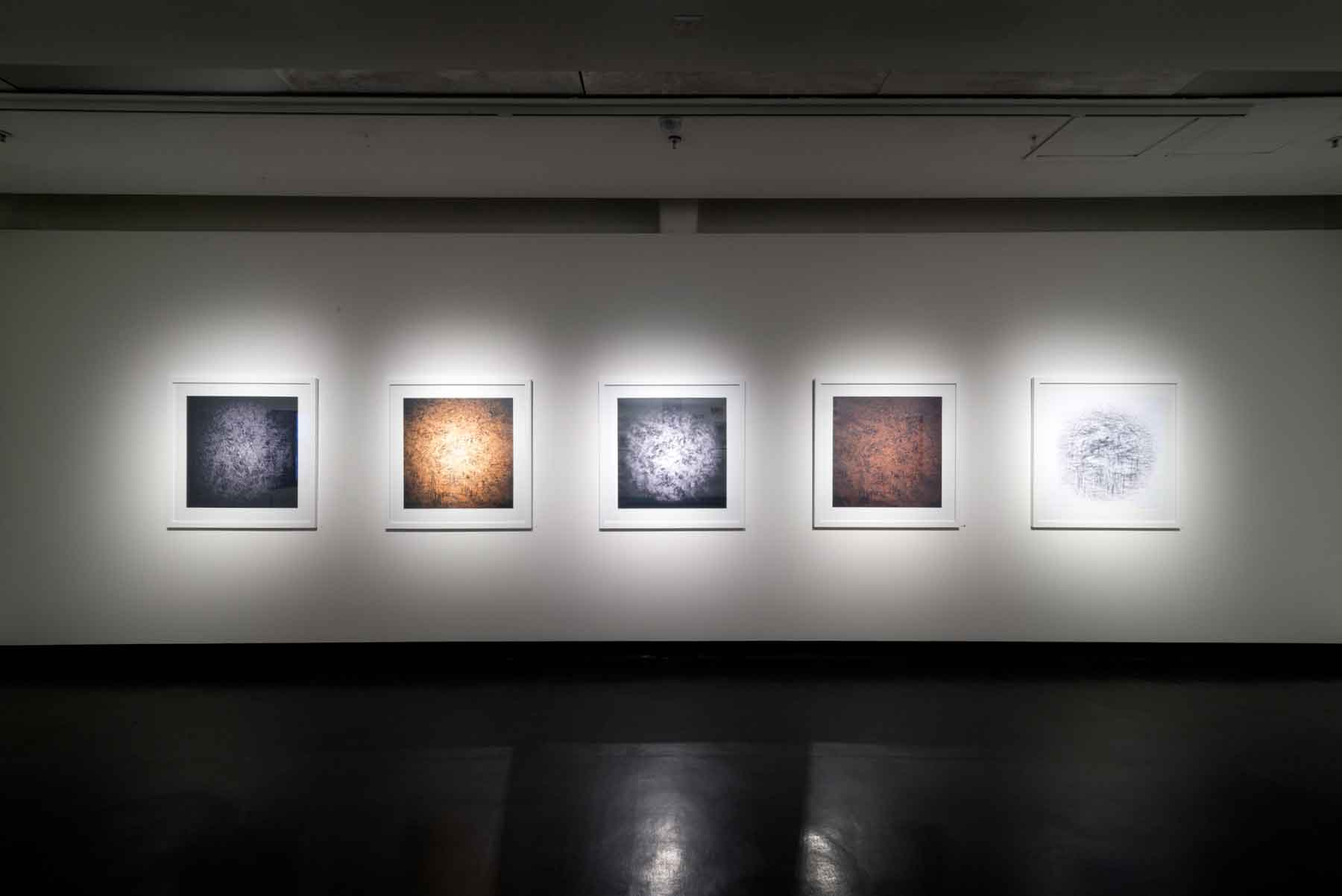
MFA Exhibition, July 2018
When exhibiting, I like to have a number of artworks to select from. Currently, I am showing with Brenda Colahan Fine Art in Sydney. This gallery representation commenced last year after I exhibited at The Other Art Fair, Sydney. This year I will again be exhibiting at The Other Art Fair in Sydney from March 14-17. Being exhibited in an art fair for the first time not only was an amazing experience but also reflected the years I have been a practicing artist. The atmosphere from the exhibiting artists, the audience and new clients that I met all provided a very successful experience.
As well as holding solo and group exhibitions you have University lecturing position, how do you fit it all in?
I have been working in the education field and on my art practice for many years. I enjoy working in the University sector, in particular the RMIT Art School as I was able to combine my love of art with education. Working with art students and other artists provides an environment for feedback, dialogue and reflection. I enjoy the company and rigorous conversations that is had at the University especially in regard to creating artworks.
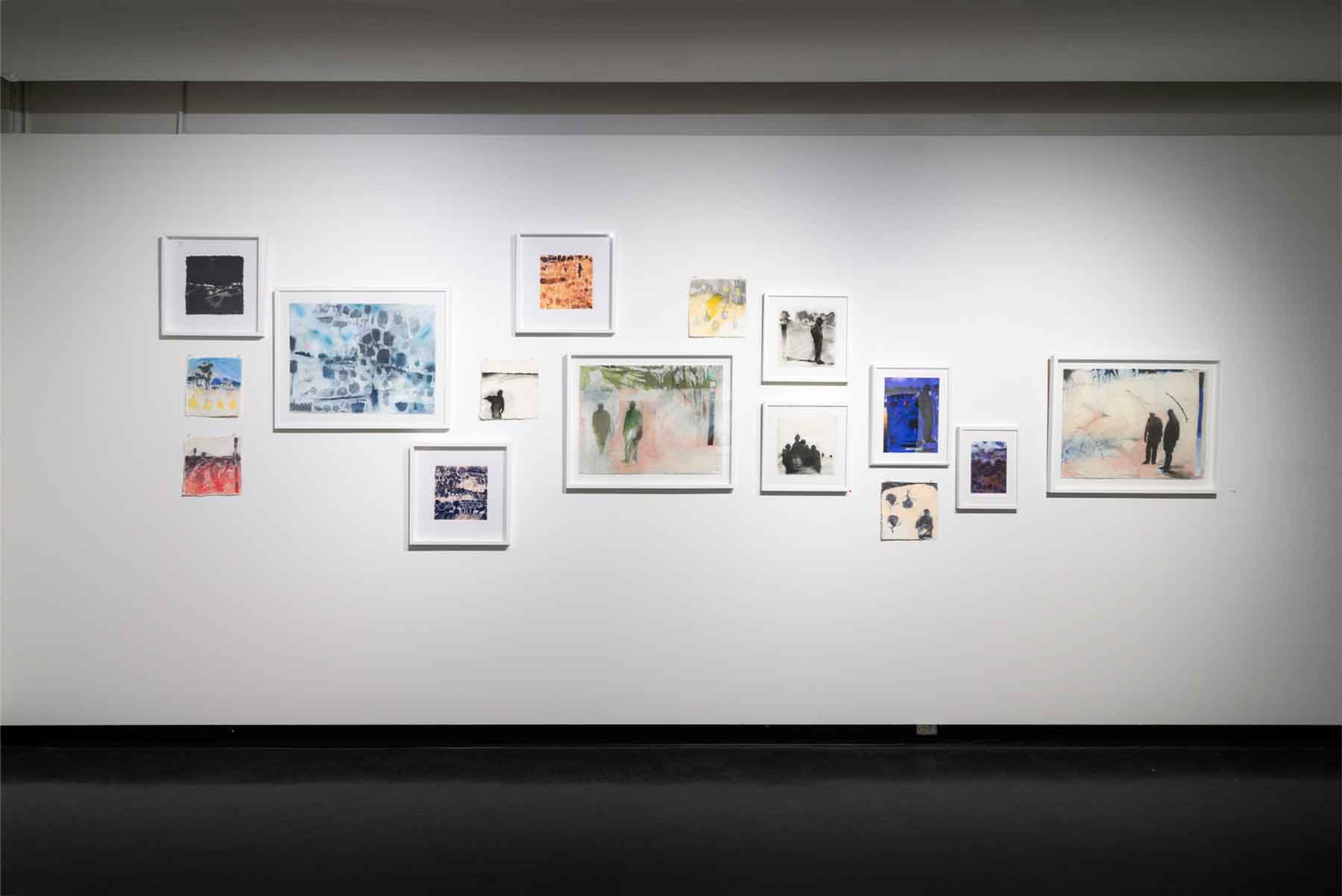
MFA Exhibition, July 2018
I have always been hard working and I manage to juggle full time employment with an art career by having a supportive partner, family and well organised schedule. When it comes to time management, I am quite pragmatic. What is most urgent and what can wait. I work most days on my practice, sometimes in the evenings or when I have an exhibition coming up in the early hours of the morning before work. It is a labour of love and I am fortunate to have had the opportunities that have allowed me this. These opportunities have been created not through luck but tenacity and hard work.
Who is Mr Wilson?
Mr Wilson is based on my father as well as the many men and women who live and work in regional and remote communities. Mr Wilson is a silent, hard-working, stoic hero who is committed to family and the community. My father Michael Wilson has lived in regional Victoria all his life. His knowledge of the community and country living provided the impetus for many of the artworks that I have created.
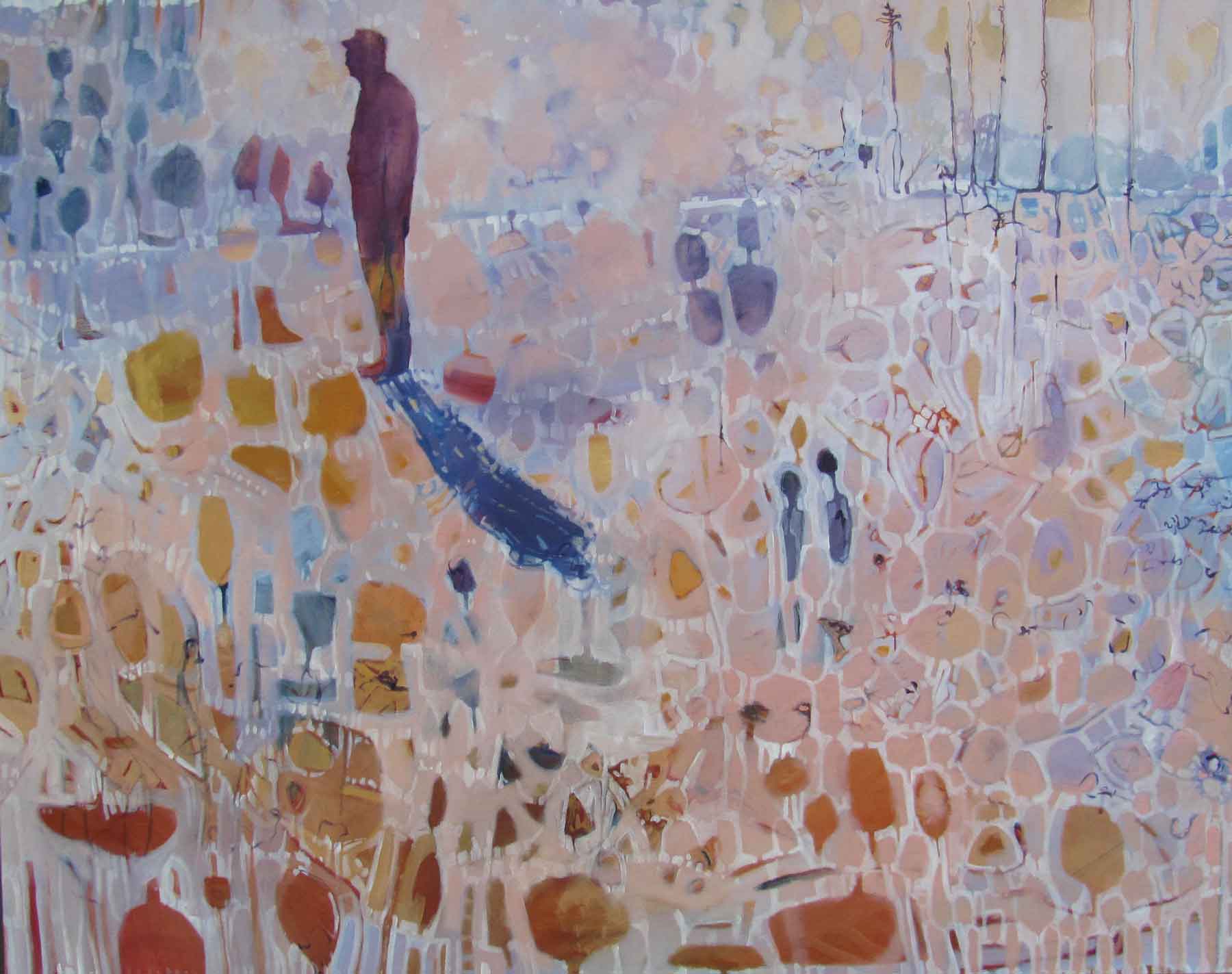
Mr Wilson, Oil on linen, 125 x 155cm
When did you first introduce Mr Wilson into your work?
My Wilson emerged in my work in 2014. My father and mother have always been very supportive of my art practice. My father Michael agreed to be a model for a series of photographs that documented changing weather and temperature over a period of several hours. The photoshoot was taken at the foot of the Warby Ranges in South Wangaratta. I documented a change in climatic conditions over a period of six hours. This photoshoot was undertaken in January 2014 on an intensively hot summer’s day and established a creative vision for the MFA and many of the artworks created. These photos inspired a series of paintings and drawings and the development of digital artwork and animated drawings with sound.
Take ‘Relocation’ and discuss the deep layering of the work.
Many of my oil paintings such as ‘Relocation’ use a method of thin washes of oil paint to build up surfaces. I use a lot of thinning medium to dilute the oil paint. These layers provide a surface that can then be blocked out so images and shapes can emerge through the paint. The oil painting medium can be deceiving as it could be interpreted as water colour or inks. However, oil paint has the capacity to be more supportive for multiple layers of paint.
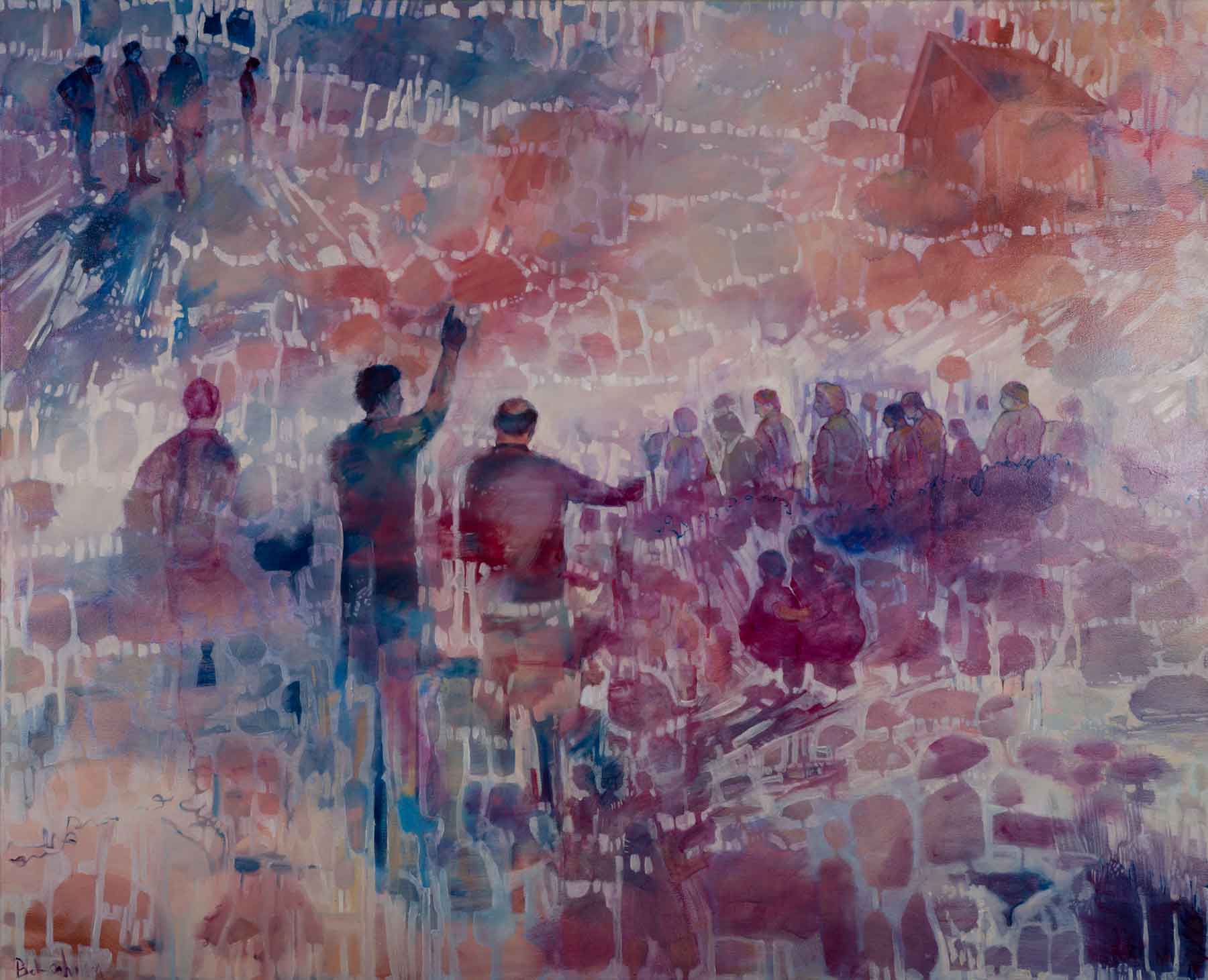
Relocation, Oil on Canvas, 125 x 155cm
Oil painting for me is a lot hardier and forgiving than watercolour. For many paintings, the images are worked out on the canvas, the layering method allows for this to happen. I may have sketches and photos that I base the work on, but it is how the paint moves and flows on the canvas that allows for the imagery to emerge and be finalised.
You use several mediums, expand on your many choices and why each has a place in your portfolio?
I am torn between painting and drawing. I enjoy using both mediums to create artworks. Drawing is actually, an easier medium to use for me, but I like the challenges that painting provides. I never really know how a painting will turn out, whereas in drawing my mark making is very definitely and I have a lot more control over drawing mediums. Recently, I introduced digital drawing into my portfolio. The beauty of digital drawings allows me to reproduce and manipulate images. I can scale them to be quite large but also very small. I usually produce limited editions of no more than 50 prints.
You were included in 20 Australian Women Artists over 20 Years Exhibition at the Brenda Colahan Fine Arts Gallery. Discuss.
Your feelings on being included along with 19 others.
I was thrilled to be included in this exhibition called 20 Australian Women Artists. The calibre of artists who I admired greatly, was one of my career highlights. For many years, I would view these artist’s artworks in many exhibitions. They are artists who have created a unique voice and identity in contemporary Australian art. Each artist provides a significant contribution to the art scene in Australia. They are recognised on both a national and international scale.
Which, of the other artists did you feel most formidable to be amongst?
I would say all of them. To be included in this exhibition with these amazing artists who have such a strong name in the Australian art scene was incredible.
To have my work alongside Tracey Moffat, Judy Cassab, Melinda Harper, Emily Kame Kngwarreye just to name a few of the exhibiting artists provided a remarkable experience for me as an artist. It was overwhelming to be exhibited along side these brillant artists.
Your personal feelings on exhibitions that are gender based.
This is a difficult question, as I don’t feel my art practice is based on my gender. I tend to make art as a commentary on issues both personal and environmental. Though I am a female artist, I don’t think this defines my work. To be included in a gender-based exhibition celebrates the contribution that each artist has made to the industry and showcases the diversity and range of work that is being produced by contemporary artists.
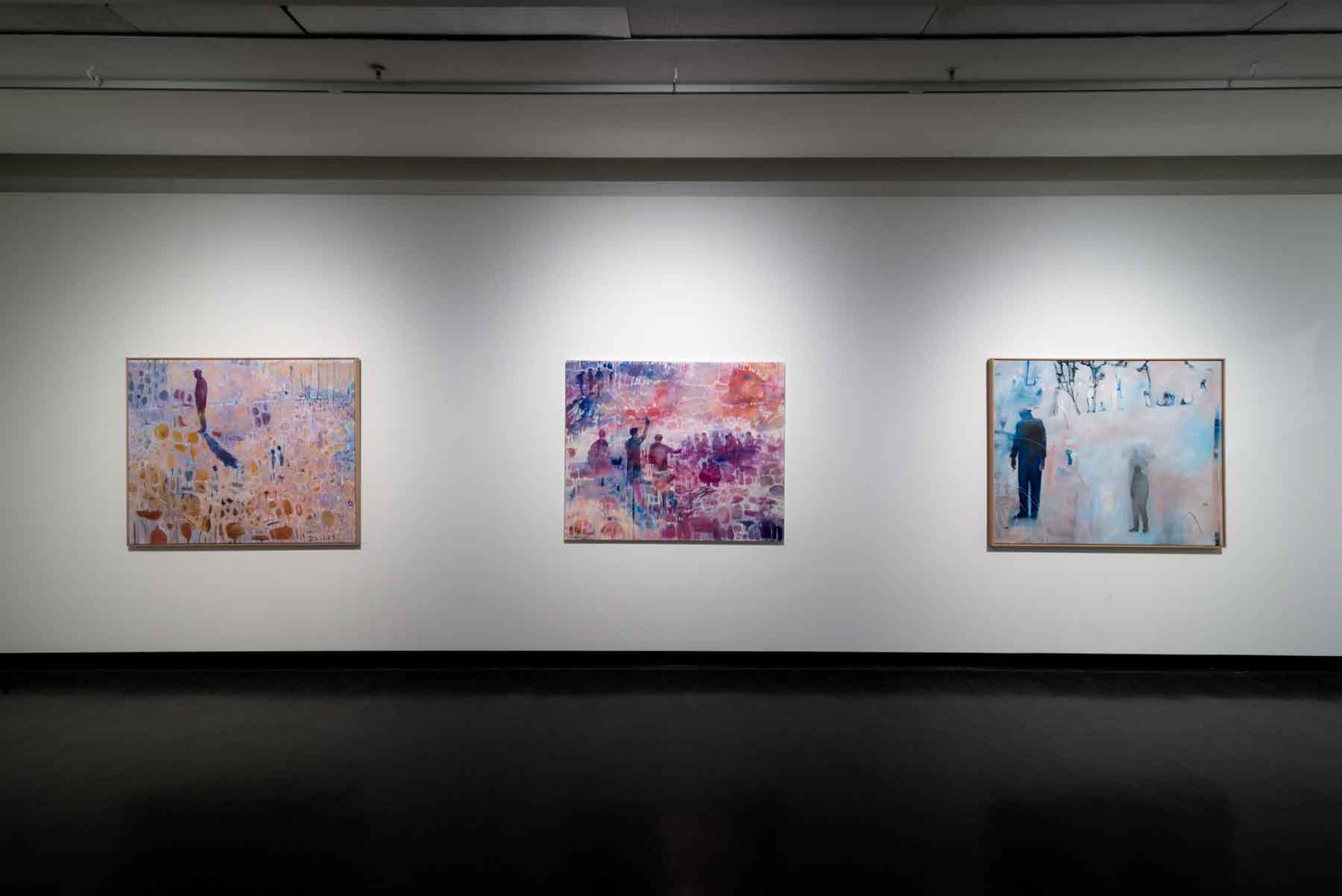
MFA Exhibition, July 2018
Have you ever exhibited with Aboriginal arts before.?
What did you learn from them?
How many pieces did you have to submit?
Expand on the diversity of this exhibition for you personally.
My work was included in the 20 Australian Women Artists over 20 Years Exhibition at the Brenda Colahan Fine Arts Gallery. This exhibition included Indigenous artist and non- Indigenous artists. The exhibition and artworks were selected and curated by Brenda. This was the first time my work had been included with Indigenous artists and I feel immensely proud to be included amongst the calibre of these great artists.
Can you give your own thoughts on the importance of having practicing artists work with students at a University level?
I think it is incredibly important to have industry professionals work in the education sector as this provides students with current practices, trends and understanding of what the industry requires. When I was Deputy Head in the School of Art, all my teaching staff were practicing artists that would exhibit throughout Australia. This taught the students not only the methodology about making art but also the business about being an artist. Each artist would provide their understanding of the art industry, the expectation of exhibiting, the ability to network and run a studio. I think this provides an art student with a better understanding of how to become a working artist. The educators at RMIT are very generous with their time, knowledge and experience with the students.
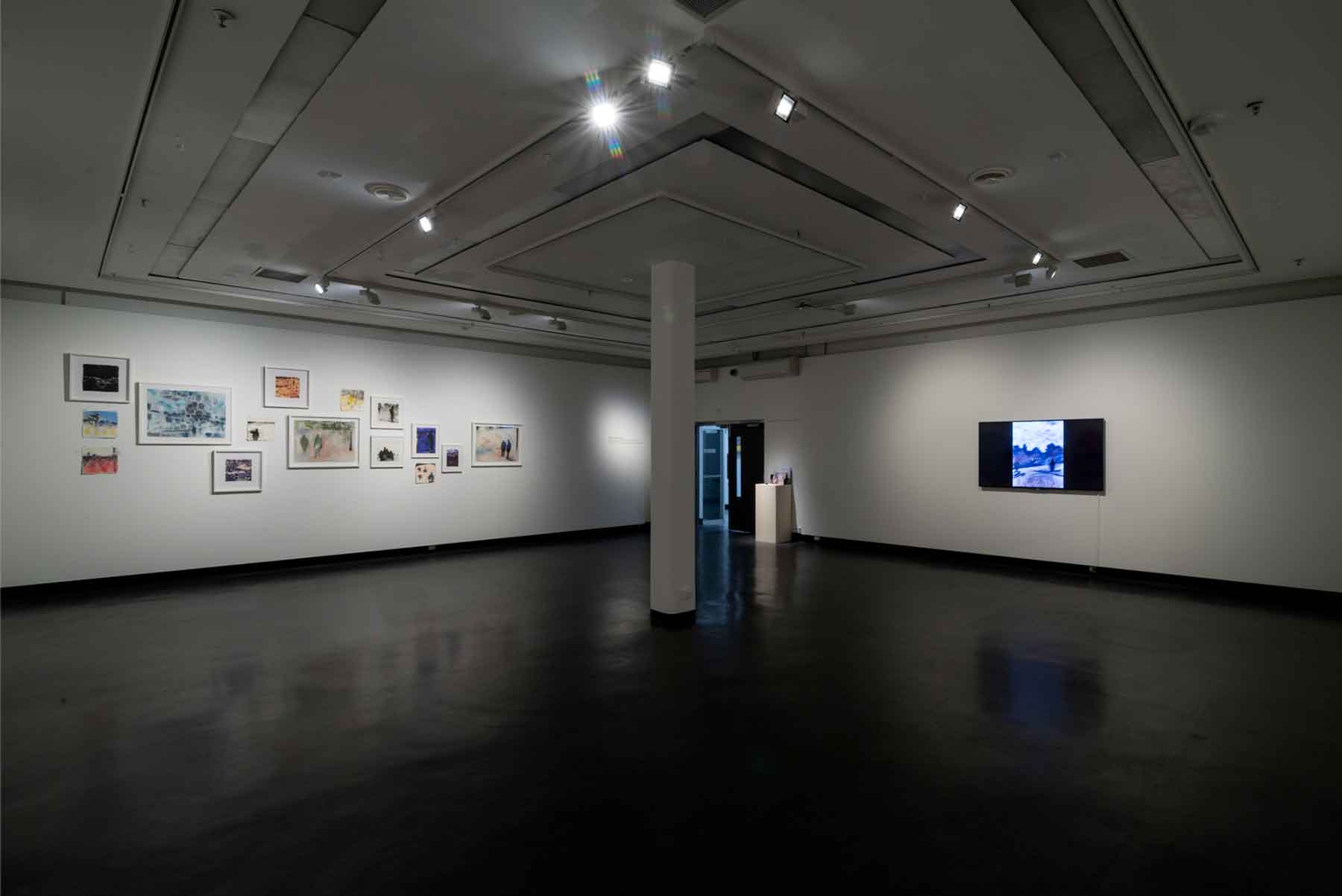 MFA Exhibition, July 2018
MFA Exhibition, July 2018
What do the students give you?
As an educator with many years of experience, I was constantly inspired by my art students. They provided a refreshing and energetic view of art making. They also knew about trends and ideas that were coming from the grass roots of the art scene. I think it is important to support visual arts education as in some instances funding can waiver in support for the arts. Visual arts education provides a voice and visual identity for our society. It is always exciting, changing and challenging.
What can the students gain from your art practice?
I think my 30 years-experience in the art sector can provide a wealth of knowledge and practice for students. I feel many educators including myself provide a very honest approach to be an artist, what some of the pitfalls are, what to watch out for, how to stay true to yourself as an artist, and working and exhibiting in a professional manner.
Contact details:
Belinda Wilson
https://www.instagram.com/belinda_wilson_studio/
https://www.brendacolahanfineart.com/contact/
Belinda Wilson, Melbourne, Australia
Interview by Deborah Blakeley, March 2019
Think a colleague or friend could benefit from this interview?
Knowledge is one of the biggest assets in any business. So why not forward this on to your friends and colleagues so they too can start taking advantage of the insightful information the artist has given?
Other artists you may be interested in:


